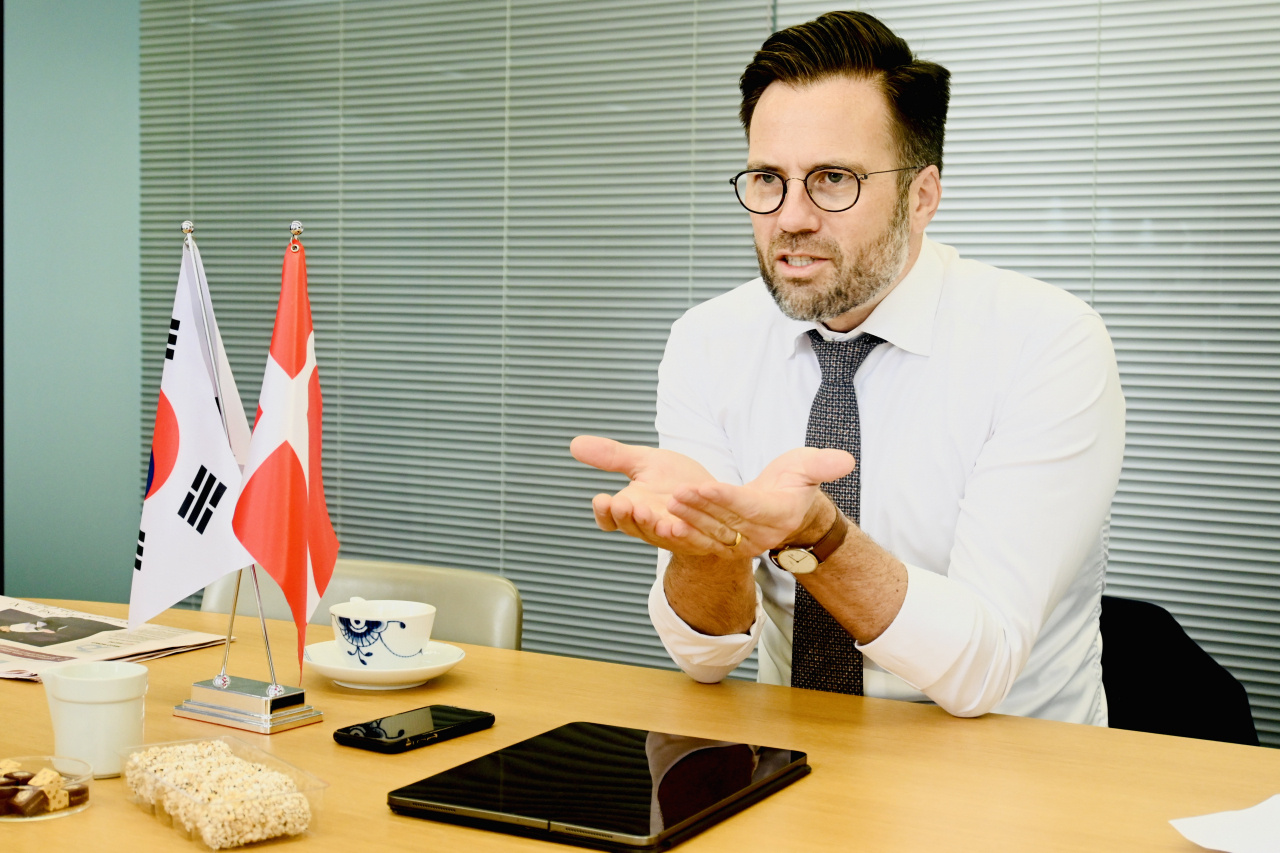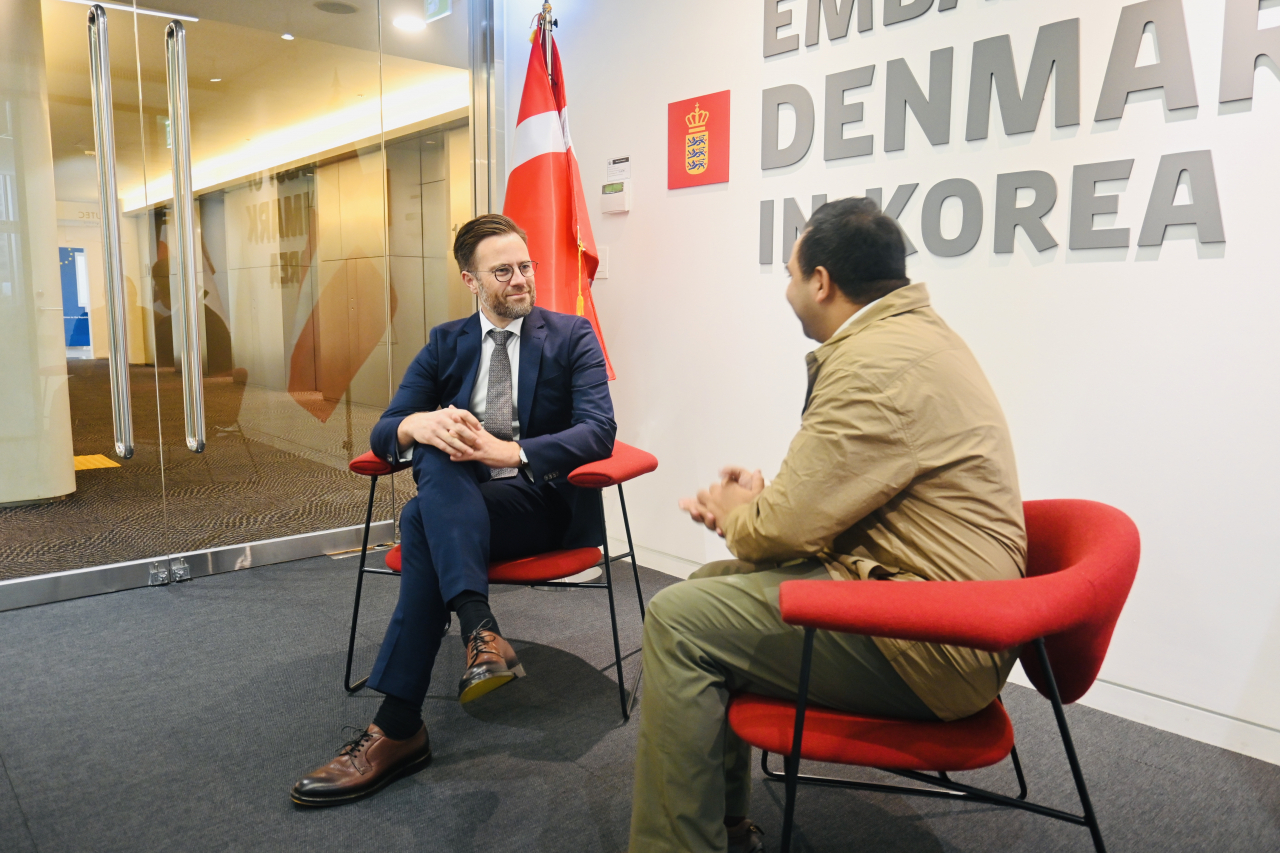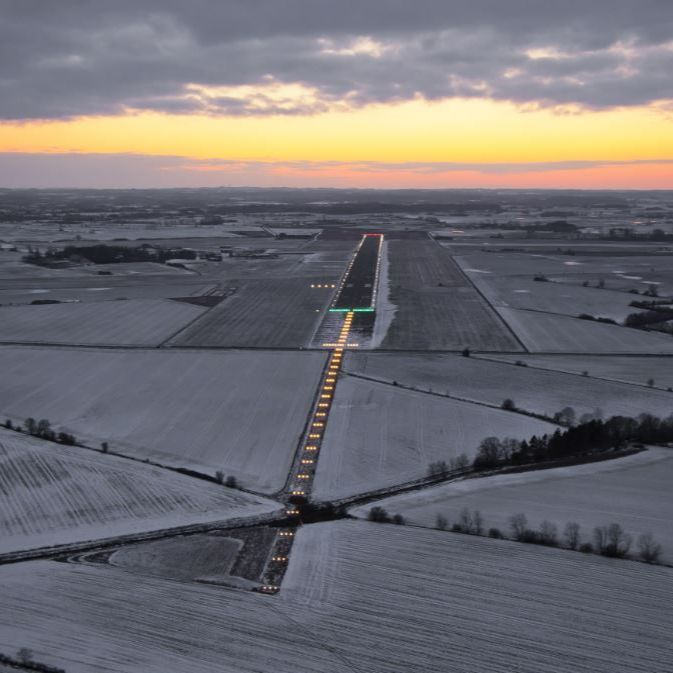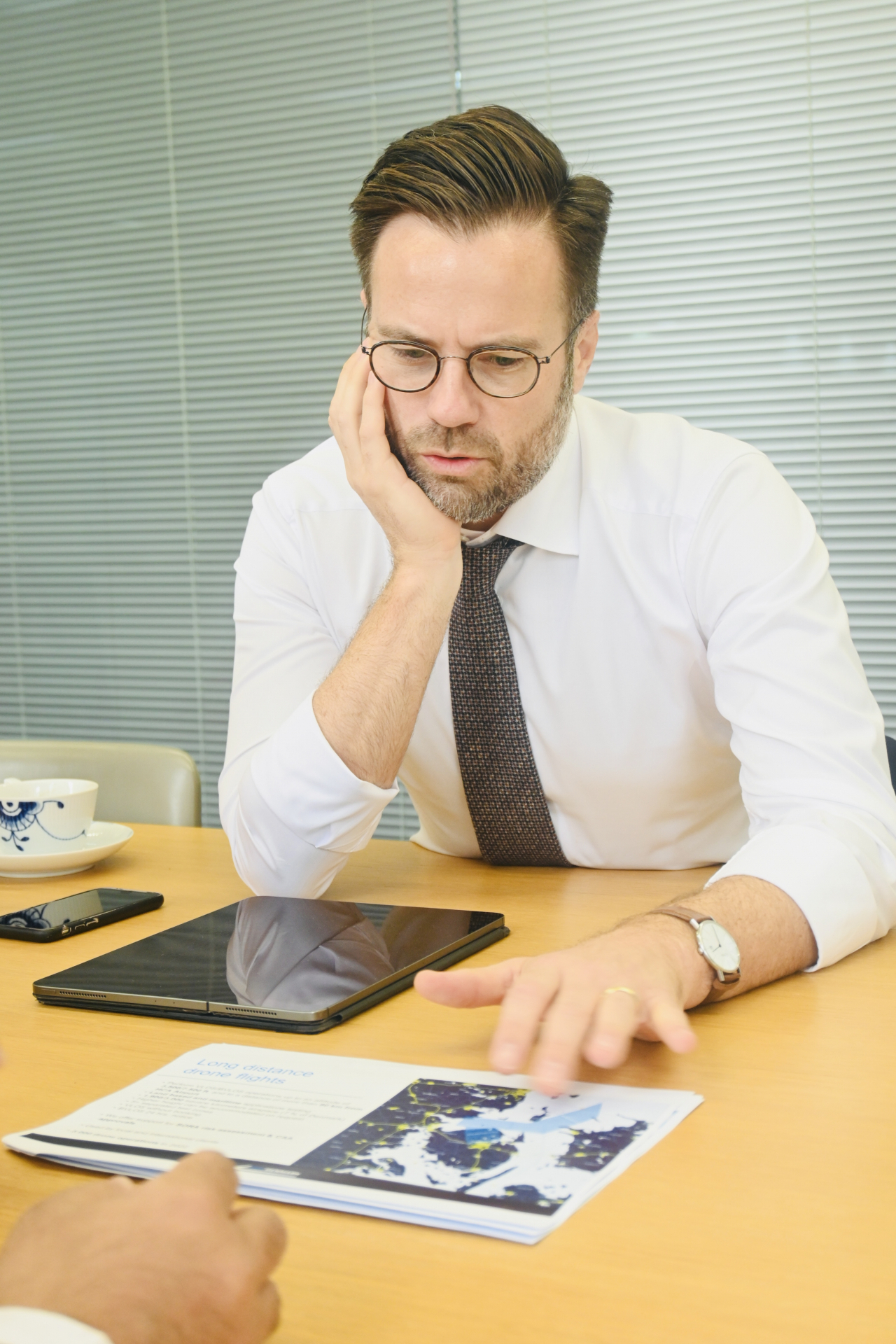 |
Peter Rahbaek Juel, mayor of Odense, talks about the potential for tech cooperation with Korea during an interview with The Korea Herald at the Denmark Embassy in Jung-gu, Seoul, on Sept. 25. (Sanjay Kumar/The Korea Herald) |
The head of Denmark's city of Odense urged stronger cooperation with Korea in urban air mobility, artificial intelligence and robotics in an interview with The Korea Herald last week.
Mayor Peter Rahbaek Juel was in Korea to attend the 12th biennial World Cities Summit Mayors Forum in Seoul and to step up cooperation in the new transportation method.
Odense, Denmark's third-largest city, is making efforts to create an operational environment for urban air mobility and infrastructure linked to Hans Christian Andersen Airport, according to the mayor.
“UAM is quick and green,” he stressed, hoping for potential collaboration with South Korea.
South Korean technology and Danish know-how would bring urban air mobility into practical use, he said, citing Odense as a business- and test-friendly environment for technological innovation.
Juel expressed hope that urban air mobility and integration into contemporary societies could address critical climate challenges.
In August 2023, South Korea's Finance Ministry announced a series of measures to promote the growth of the country's artificial intelligence chip and urban air mobility industries.
 |
Peter Rahbæk Juel, Mayor of Odense, speaks in an interview with The Korea Herald at the Denmark Embassy in Jung-gu, Seoul, on Sept. 25. (Sanjay Kumar/The Korea Herald) |
The country wants to accelerate the creation of data centers powered by domestically produced AI chips and increase financial assistance for semiconductor development by fabless companies.
"I want people in Denmark and Korea to be flying with UAM vessels in the near future,” said Juel, citing urban air mobility and robotics as a way to achieve carbon neutrality by 2030.
Juel envisions Aalborg University as an integral part of achieving this goal and of seamlessly integrating city transportation and infrastructure.
"We have already built a strong ecosystem within robotics and drone technology," he said introducing a well-established testing structure for cooperation among local government, the national government, universities and businesses at the domestic and international levels.
When asked about the potential for cooperation with South Korea, Juel said Korea's leading position in the technology sphere makes it a good potential partner.
“I think when it comes to technology, especially UAM technology, South Korea is ahead of Denmark," Juel said.
Both Denmark's and Korea's strength lies in bringing state-of-the-art technology into everyday life and making it practical, according to him.
 |
A view of UAS Denmark Test Center located in Hans Christian Andersen Airport. (City of Odense) |
"We have built one of the strongest clusters within robotics,” he said, hoping to bring together Korean technology and Danish testing expertise.
On concerns about regulatory hurdles, Juel said regulatory challenges related to urban air mobility are global in nature, and call for collective efforts.
According to Juel, discussions in the Danish government to come up with a drone strategy are ongoing, advocating for international legislation to facilitate UAM testing and operations.
Korea plans to create a government task force to allocate a dedicated frequency for the urban air mobility industry to lead in the establishment of global standards.
Additionally, to accelerate the development of self-driving cars, the Korean government has made changes to privacy laws, enabling companies to use videos recorded by vehicles to build a database.
Its goal is to remove regulatory obstacles to investment, lower barriers for emerging industries and improve the overall business investment environment in support of these sectors, according to South Korea's Finance Ministry.
“Odense's unique advantage lies in its dedicated airport for drones, an ideal environment for testing UAM vessels,” he said, citing Odense as a hub for testing UAM technology in northern Europe with easy access to several cities within a few hundred kilometers.
 |
Peter Rahbæk Juel, Mayor of Odense,e showcases locations for testing UAMs during an interview with The Korea Herald at the Denmark Embassy in Jung-gu, Seoul,l on Sept.25. (Sanjay Kumar/The Korea Herald) |
He also highlighted Odense's growth in the robotics industry, which generated 4 billion euro ($4.21 billion) in turnover and 2.1 billion euro in exports.
Odense has a population of approximately 200,000 and is known as a European robotics industry base.
According to Juel, Odense's robotics industry is to generate 6.3 billion euros in turnover by 2025 and 3.3 billion euros in exports, employing more than 30,000 people.
He invited Korean companies to use the robot hub established this year at Aalborg University.
Odense city owns Andersen Airport and, as a local government, can carry out direct airport connection projects, said the mayor, pointing to potential room for research collaboration between the University of Southern Denmark's expertise in drone technology and Korean universities.







